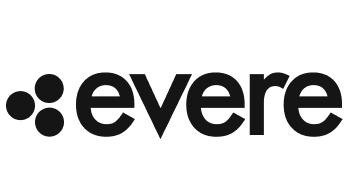The regulatory landscape has evolved considerably recently, making adherence to compliance standards increasingly challenging for organizations across industries. Quality audit software has emerged as a pivotal technological solution for companies seeking to maintain standards while improving operational efficiency. As we progress through 2025, this technology continues to advance, reshaping how businesses approach quality management and compliance verification.
How is technology changing traditional audit processes?
The shift from paper-based systems to digital audit platforms represents one of the most significant developments in quality management. Traditional audit processes typically involved extensive paperwork, manual data entry, and time-consuming reviews that created substantial administrative burdens. Modern quality audit software eliminates these inefficiencies by allowing auditors to collect evidence and complete questionnaires on-site, attach relevant documentation in real-time, and synchronize findings once connected. This technological transformation has compressed audit timelines dramatically, turning what once took weeks into processes that can be completed in hours.
Digital audit trails provide unprecedented visibility into compliance processes, enabling organizations to identify patterns, address systemic issues, and demonstrate due diligence to regulators. The structured data captured through these systems supports more sophisticated analysis than was previously possible with paper-based approaches. Companies implementing digital audit solutions report 40-60% reductions in audit completion times alongside significant improvements in finding resolution rates.
Get a tailored solution: https://axonator.com/request-for-demo/
What technological innovations are driving audit software development?
Artificial intelligence stands at the forefront of audit software advancement. AI technologies have gained increasing trust within audit firms for their ability to automate repetitive tasks, improving efficiency and accuracy while allowing human auditors to focus on more complex aspects of compliance work. These systems can analyze text-based data from documents like contracts or invoices, extracting relevant information at scale and reducing human error in the process.
Cloud-based audit platforms have gained significant traction, enabling remote audits and supporting distributed teams across multiple locations. These solutions provide flexibility, scalability, and improved collaboration capabilities essential for modern business operations. 12. Cloud infrastructure ensures data security while making audit information accessible to authorized personnel regardless of their location. This accessibility has proven particularly valuable as organizations continue to embrace hybrid and remote work arrangements.
Mobile applications represent another key advancement, allowing audit personnel to conduct assessments using smartphones or tablets. These apps enable offline data collection, photo documentation of findings, and immediate issue flagging. When connected to networks, the information synchronizes automatically with central systems, ensuring data integrity and eliminating the need for manual transfers.
Why are companies investing in automated audit solutions?
A manufacturing quality manager with fifteen years of experience recently shared his perspective: "Before implementing our digital audit system, we spent approximately two full days each week just managing paperwork and reconciling findings. Now that process takes less than three hours, and our ability to track issues through resolution has improved dramatically. When auditors identify non-conformances, the system automatically triggers workflows, assigns responsibilities, and tracks resolution timelines. We've reduced our average issue closure time from nearly a month to just over one week."
This narrative reflects the reality for many organizations facing mounting pressure to maintain compliance while controlling costs. Automated audit processes address both concerns by streamlining workflows and reducing resource requirements. The technology eliminates paper handling, minimizes manual data entry, and automates report generation, freeing staff for higher-value activities.
Data accuracy represents another compelling reason for investment. Manual processes introduce numerous opportunities for error—from misinterpreted findings to transcription mistakes. Digital solutions incorporate validation rules, standardized formats, and automated calculations to ensure consistent, reliable results. This improved accuracy translates directly to better compliance outcomes and reduced regulatory risk.
How does quality audit software integrate with quality management standards?
International standards like ISO 5055 provide frameworks for measuring software quality across critical factors including security, reliability, performance efficiency, and maintainability 3. Modern audit software supports compliance with these standards by structuring assessments according to recognized criteria and providing automated verification of requirements.
The software facilitates before-the-fact measures during development processes, helping teams identify and eliminate structural weaknesses before they cause operational problems 3. This proactive approach contrasts sharply with traditional reactive methods that only identified issues after they impacted business operations.
When should organizations consider implementing audit software?
The transition point typically arrives when manual processes begin creating visible bottlenecks in quality management workflows. Warning signs include delayed audit completions, inconsistent findings between auditors, difficulty tracking corrective actions, and challenges producing documentation for external assessments. Organizations managing multiple compliance requirements across different standards or regulations often reach this threshold earlier due to the complexity of their audit universe.
Implementation timing should align with organizational readiness. Successful adoption requires clear process documentation, stakeholder buy-in, and sufficient resources for configuration and training. Many organizations find phased implementations more manageable, beginning with core functionality and expanding capabilities over time.
Who benefits from advanced audit technology?
While quality and compliance teams represent the primary users, the advantages extend throughout organizations. Operational managers gain visibility into compliance status without waiting for formal reports. Executive leadership receives more timely risk information and better assurance regarding regulatory compliance. IT departments benefit from reduced shadow systems as standardized platforms replace departmental spreadsheets and databases.
External stakeholders also recognize the value. Regulatory inspectors typically report more productive site visits when organizations can quickly produce requested documentation. Customers conducting supplier audits similarly appreciate the efficiency and transparency that structured systems provide.
The evolution of quality audit software continues as organizations recognize the strategic advantages of modernized compliance processes. Those who successfully implement these technologies position themselves for more efficient operations, stronger compliance outcomes, and improved organizational resilience in an increasingly complex regulatory environment.
